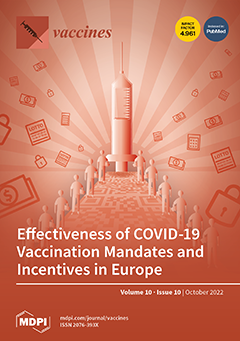(1) Background: Vaccination may be a key intervention to prevent infection in chronic hemodialysis (CHD) patients. This study aimed to determine the COVID-19 vaccination status in Egyptian CHD patients and to analyze the safety and detailed side effect profile of the COVID-19 vaccine among these patients. (2) Methods: This survey-based study was conducted on 670 end-stage renal disease (ESRD) patients on CHD from 3 December 2021 to 5 February 2022. Subjects were asked about sociodemographic characteristics, clinical and therapeutic data, in addition to their COVID-19 vaccination status. If the subject had been vaccinated, we inquired about the type of vaccine and the side effects that occurred within a few days after administration of the first and second dose of the COVID-19 vaccine. Additionally, subjects were asked about the onset of side effects (days from vaccination), timing of maximum symptoms, intensity of symptoms and their effect on activity and need for medical attention. (3) Results: The study included 670 CHD patients with a mean age of 50.79 years; 58.1% were females. The vast majority (614; 91.6%) of the studied patients received two doses of the vaccine. Side effects were more commonly reported after the first dose than the second dose. The main side effects reported were generalized weakness/fatigue (56%), headache (43.8%) and fever (40.4%), and sore arm/pain was also reported (29.3%). Adverse events mostly occurred within one day after vaccination and the maximum symptoms usually happened on the second day. The median duration of symptoms was 3 days with a maximum duration up to 5 days. The univariate logistic regression analysis showed that male gender (OR 1.848; (95% CI, 1.242–2.749),
p = 0.002), age (OR 0.981; (95% CI, 0.969–0.993),
p = 0.003), smoking (OR 6.067; (95% CI, 3.514–10.475),
p < 0.001), duration since starting HD (OR 0.998; (95% CI, 0.998–0.999),
p < 0.001), associated comorbidities (OR 2.202; (95% CI, 1.478–3.281),
p < 0.001) and prior COVID-19 infection (OR 3.318; (95% CI, 1.952–5.642),
p < 0.001) were the main determinants of adverse events related to COVID-19 vaccination. (4) Conclusions: our preliminary findings support the favorable short-term safety profile of the COVID-19 vaccine among CHD patients, and hence can reassure both clinicians and patients, as well as further promote COVID-19 vaccine administration among these patients.
Full article






